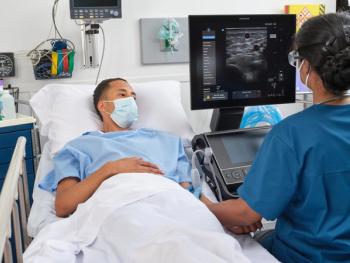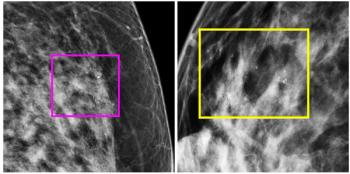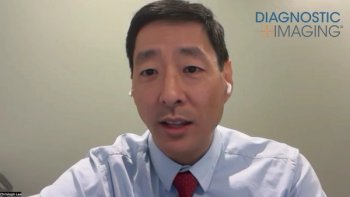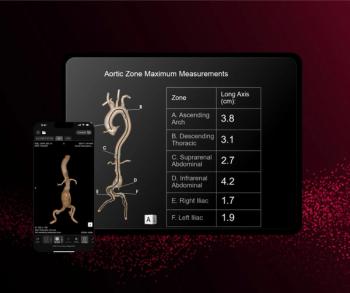
Chest MRI Matches Chest CT for COVID-19 Follow-up Imaging
Chest MRI picks up the same characteristics of COVID-19 pneumonia that are seen on chest CT, making it a good alternative without the radiation.
Chest MRI can be an effective, non-ionizing radiation alternative to chest CT when conducting follow-up imaging on patients with COVID-19 infection, according to a small study.
MRI scans can pick up both specific and indeterminate features of viral infection equivalently to CT scans, said a team of investigators from Iran. They published their findings in the Sept. 17
“Our preliminary data…showed that common CT manifestations of COVID-19 pneumonia, such as bilateral multi-focal ground-glass, consolidative, nodular or reticular opacities can be identified and distinguished on MIR, although the imaging features are not specific,” said the team led by Shahram Akhlaghpoor, M.D., from the Pardis Noor Medical Imaging Center in Tehran, Iran. “Although MRI is not the modality of choice for evaluation of pulmonary opacities, it has similar capabilities in detection of COVID-19 pneumonia when compared to chest CT.”
According to the authors, this is the first case series to evaluate COVID-19 pneumonia on MRI.
For more coverage based on industry expert insights and research, subscribe to the Diagnostic Imaging e-newsletter here .
To make this determination, the team conducted both chest CT and chest MRI scans on the same day on eight patients with an average age of nearly 41 who were positive for COVID-19 and were treated in their center from March 20, 2020 to April 8, 2020. Every patient presented with mild symptoms, and none needed supplemental oxygen support.
Patients first underwent chest CT scans of 1-mm thickness on a 16-slice scanner that revealed typical, indeterminate, or atypical features of COVID-19 pneumonia. Investigators, then, conducted an eight-sequence chest MRI protocol using a 1.5T scanner. All scans were reviewed by a 10-year veteran radiologist.
Based on the scan analysis, five patients had typical CT features, including ground-glass opacities and consolidations. These findings could also be easily seen on chest MRI. The other three patients had indeterminate or atypical findings that also showed up on chest MRI.
These results highlight the equivalency of both modalities, the team said.
“Our study drives home the fact that chest MRI can act as a potential alternative to chest CT in follow-up of COVID-19 pneumonia although further studies are warranted,” they said.
But, using MRI is not without its challenges, Akhlaghpoor’s team explained. As with every other modality in the current healthcare environment, there are concerns about COVID-19 infection and transmission risks.
Further research is needed, the team said, and subsequent investigations should include a larger patient population that is more diverse in age. Such studies can provide more details about these lung findings, as well as examine how diagnostic accuracy, sensitivity, specificity, false negative rates, and cost effectiveness compare between MRI and CT.
Ultimately, they said, radiologists must improve their understanding of COVID-19 in the context of MRI.
“Becoming familiar with typical findings of COVID-19 pneumonia in MRI is crucial for every radiologist,” they said.
Newsletter
Stay at the forefront of radiology with the Diagnostic Imaging newsletter, delivering the latest news, clinical insights, and imaging advancements for today’s radiologists.

























